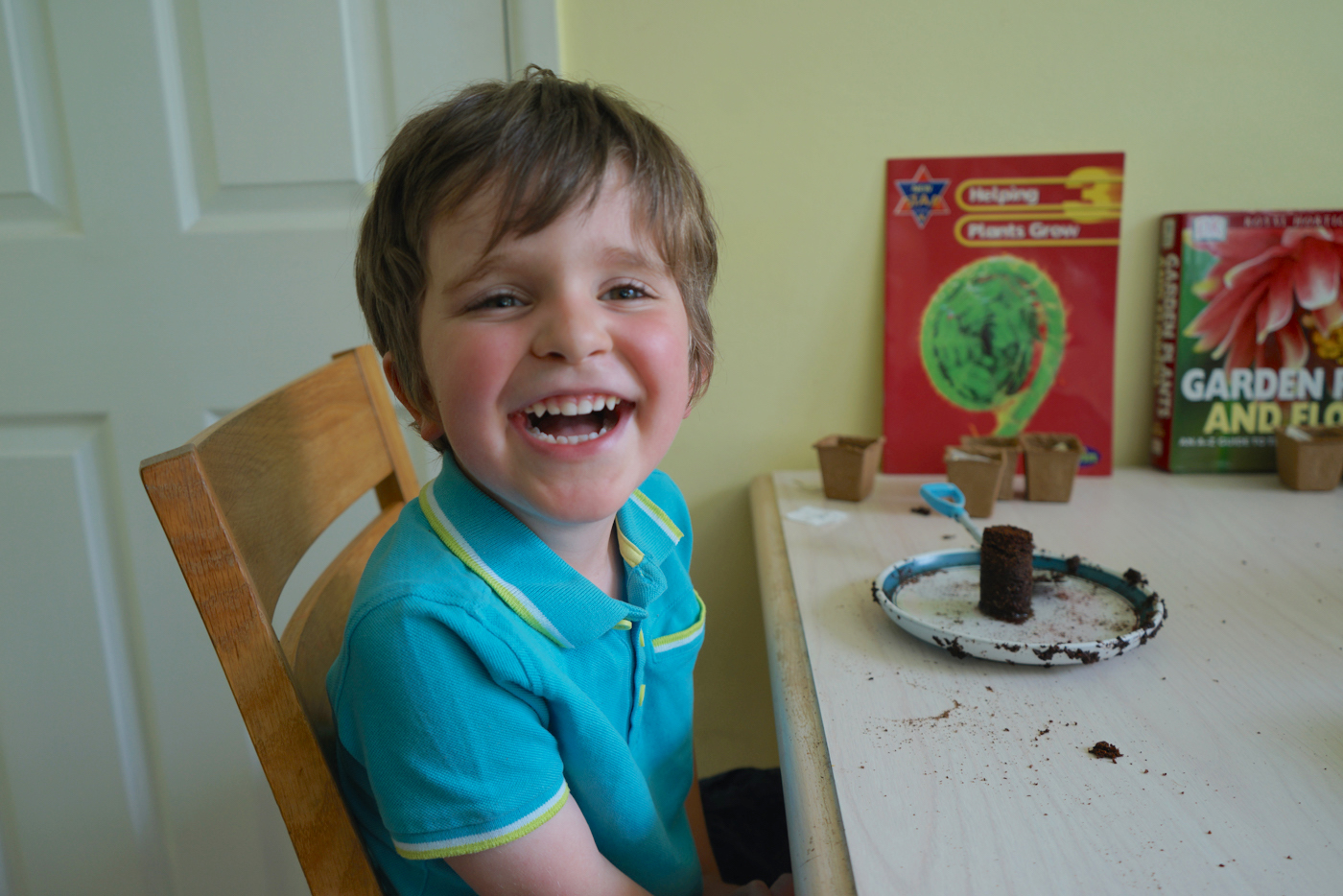First, we talked about how instructions are written for somebody who needs to know how to do something. They have a heading, a numbered sequence of steps and imperative verbs (bossy words). The instructions can either be set out with a numbered sequence of steps, or written using time connectives (e.g. first, then, next, finally) to show the sequence the steps should be performed in.
Resources
- M&S Little Garden Seedling Kits
- Plate
- Jug of water
- Gardening gloves
- Trowel or spoon
Method
They started off by popping the plant labels off the boxes, reading what they’ve got, then placing them in the plant pots. Ioan insisted on double checking that Finn had read all of his plant names correctly.
Sharing the plants fairly. They started off by grouping the plants by type, to see how many of each they had.
Then Ioan shared the plants in to groups. He’s been learning about fractions this month, first using his Star Wars passion to work on BB-8 Fractions: whole, half and a quarter, Star Wars: Halving and Star Wars: Quarters. We also looked at fractions for VE Day with our VE Day Fractions and our Scone Fractions Dice Game, so I wanted to see how much he had remembered.
Ioan read out, then followed, the first instruction.
Ioan was very impressed how much the soil tablet had grown, just in the time it took to get his gloves on. He hates any kind of messy play, so getting him to mix the soil together with his fingers (even wearing gardening gloves) was a huge step.
Still reading and following the instructions, Ioan filled the pot with soil. We measured, then drew a red line 1cm from the top, so Ioan knew how far to fill the pot.
After waiting patiently for Ioan to have his go, it was Finny’s turn.
Then, they each repeated the process for their remaining five seeds.





















They definitely got faster with practise, but the excitement of the growing tablet, never dampened down.


















One week later
Checking the progress of their seeds.
6 weeks later
We repotted our seedlings and looked at labelling parts of a plant.
DfES Outcomes for EYFS and National Curriculum (2013)
English Year 1 programme of study
Reading – word reading
- apply phonic knowledge and skills as the route to decode words
- read aloud accurately books that are consistent with their developing phonic knowledge and that do not require them to use other strategies to work out words
- re-read these books to build up their fluency and confidence in word reading.
Reading – comprehension
- discuss word meanings, linking new meanings to those already known
- check that the text makes sense to them as they read and correcting inaccurate reading
- explain clearly their understanding of what is read to them.
Mathematics Year 1 programme of study
Number – fractions
- recognise, find and name a half as one of two equal parts of an object, shape or quantity
DfES Outcomes for EYFS and National Curriculum (2013)
Science Year 1 programme of study
Plants
- identify and name a variety of common wild and garden plants, including deciduous and evergreen trees
- identify and describe the basic structure of a variety of common flowering plants, including trees.
Science Year 2 programme of study
Plants
- observe and describe how seeds and bulbs grow into mature plants
- find out and describe how plants need water, light and a suitable temperature to grow and stay healthy.











